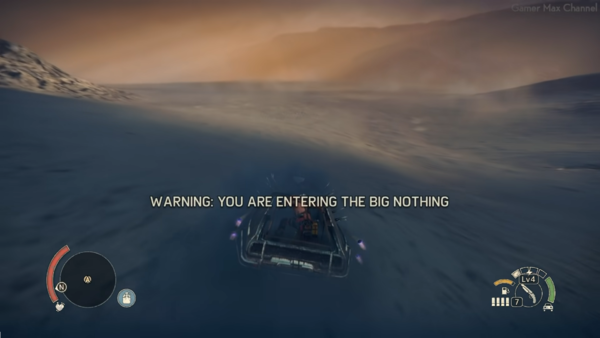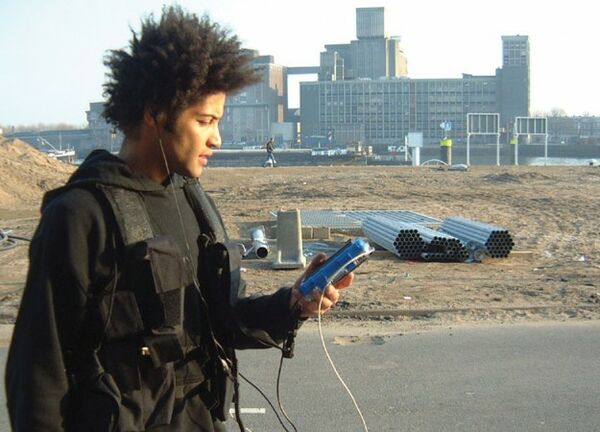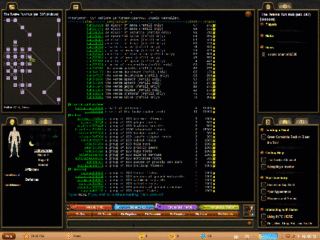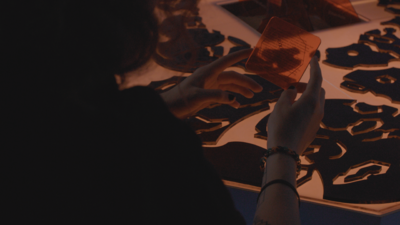Louisa-thesis outline
Draft, 30th November 2021.
Research Question
How can I suggest alternate ways of urban behaviour in an industrial playground like Rotterdam, moving people to play instead of be played? Can location-based games be used to cause critical reflection on location-based targeted advertisement, making the matter more tangible?
Abstract
[150-200 words]
In this thesis I will document the process of building a location-based, pervasive game. The topic revolves around personalised, location-based targeted content under the veil of ludification. By analysing novelty game formats like alternate reality- and escape games, and connecting them to methods of targeted advertisement, I am starting a networked narrative through augmentation and modification of physical spaces.
Introduction
[500 words]
I wake up from a loud bang. I am standing in the middle of my room. To my feet, a bottle is spilling water all over the blanket I am wrapped in. I grab the bottle, take it to the sink where I put it down and look at my face in the mirror. It takes me a moment to realise I have been sleep walking again.- October, 2021.
For the first time I am able to remember the dream I had, while moving through my room in parallel. There were blankets in my dream too, and the proportions of the floor plan roughly matched. Everything further away than my hands was rather dark and blurry. I am in the same space in a new timeline. Thanks to the maps roughly matching up, I was able to move around without walking against walls bumping my head, considering that making the bottle fall was an accident. Something clicks and I realise why, in my creative practice, I am obsessed with giving objects, places and people in real spaces a new meaning within another narrative. Subconsciously I felt these sensations for many nights as a child, and now as a strange recurrence as an adult. Do I want to go back? Or do I want to recreate this sensation in others?
I was challenged to think of games/events/activities which can exist during times of a rather strict lockdown and closed cultural venues. This led me to work on location-based games, to unlock audio-pieces and later on even a secret concert venue. Thinking of puzzles and progressive narratives and then seeing people interact with them is incredibly rewarding and feels like a powerful tool of capturing peoples attention, even if for just a little while. My aim is to activate people and change their state of mind and experience of their environment. Making use of the group present and the things everyone could contribute to the experience, instead of making them passive spectators of a work, is very valuable to me. During this research I have tried geocaching, an internation treasure-hunt of hidden name logs in public spaces. Looking closely, everything could be a potential hint. In parallel, I am building on my research on interactive fiction and targeted advertisement.
[1200 words]
In this chapter I am researching methods video game makers as well as advertisers are commonly using to herd user movement to desired areas. How are spaces used to manipulate user's movement and actions?
Living in Rotterdam for a few years, I noticed that I started moving in very strict patterns through the urban landscape. It was as if I was inhabiting a tiny village, spread around different districts. It felt almost impossible to change the paths that I travelled through. As if there was an invisible force holding me back from peeking into a side street I have never been to, or to stop and look closely at the buildings I passed by. But there wasn't, was there? I remember telling a friend that I feel as if I cannot see the corners of the rooms I am in any more. I can only see what I need to see in order to move around and do what's needed. "This is what growing up is like." They said. "I feel like I'm in a video game." I said. In video games, you seem to instinctively know where to go, what object to click on or pick up, who to fight and who to befriend. It seems as is there was an infinite amount of things to explore, places to visit and people to have meaningful dialogue with. At least in well developed video games that is. If the game makers have done their job, you won't notice that every other room in that building was empty, that only in that main hall you stumbled into, their was an overflow of storyline presented to you. This made me think back about the small village I have lined out for myself within the city of Rotterdam. I have the constant feeling that I could go anywhere, at any time, if only I chose to.
Invisible Borders in Video Games
Focussing on video game techniques to hide the map borders, integrating limits of map and unreachable areas as part of storyline.
Have you ever walked into one direction for a long time in a game, just to see if you can reach its borders? You wouldn't be the only one. There are gamers who record themselves for hours and hours on end just to capture the moment they finally cannot go any further, revealing the boundaries of the map. Video game maps are often surrounded by sea, a reason for players not to consider it as part of the playable area. But what happens when a player does decide, against all odds, to go for an extended swim? Well, in some games they might drown, in some a shark might attack, and in some a massive electric eel might penetrate their submarine. Understandably, since the depths of the ocean are not a safe place for a humans to explore, many dangers are waiting under its reflective cover. In some war games, players might get warnings about landmines, when trying to reach a part of the map that's not intended for game play, not adding to the progression of the narrative. Also understandably, apparently this is war and this can mean that there are areas that are unsafe to walk over.
Invisible Borders in Virtual Reality
In XR, geographical markers are translated into fictional environment to make sure players are not walking against walls or outside of playing field, like a wall appearing as a scary abyss.
Last September, during the media art festival RGB XYZ in Amsterdam, my sister put on VR glasses for the first time. There was an immediate cut from her and her previous environment, a rather blank room. She started moving around in excitement, calling out the things she was seeing. All of the sudden I saw her walking closely to the wall. She stopped right in front of it, looking down and saying: Woah!! It goes down so far. What she was seeing instead of the wall was an abyss. Instinctual fear kept her from daring to take any step further.
“A crucial feature of Blast Theory projects is the ability to extend user and audience affect outside the game - rather than delimiting our consciousness to the stereotypical and virtual, the gameplay pushes us to understand aspects of ourselves, our communities and social responsibility. This is partially achieved by the very visceral gameplay - in CYSMN? the players and gameplay self-generate affects of pursuers and pursued. ... It was encouraging to see Blast Theory awarded the Prix Ars Electronica Golden Nica, which has in the past lauded some commercial, apolitical projects.[1]”
Invisible Borders in Politics
Geofencing
Researching this method and political motivation behind its application.
Bright Screens & Dark Patterns
In this sub-chapter I would like to analyse mechanics commonly used to move users across different pages and areas of online platforms in order to seduce them into buying a product.
"Types of Dark Patterns
❃Bait and Switch.
❃Disguised Ads.
❃Forced Continuity.
❃Friend Spam.
❃Hidden Costs.
❃Misdirection.
❃Price Comparison Prevention.
❃Privacy Zuckering."[2]
I would like to sum Chapter 1 up by proposing how this is going to feed into the project development.
Chapter 2: Take a Leap in the Dark
[2000 words]
Interactive Fiction meets Surveillance Capitalism: playbour in targeted advertisement and location based games. how to keep people engaged, eternal scroll.
Surveillance Capitalism spilling into the city streets, leading you to where the algorithm thinks you should be going. How do companies make use of playbour, keeping them and the players happy? How can we appropriate these methods for play without labour and make them our own?
Chapter 3: The Game
[2600 words]
Which elements can i use, what platforms and engines would make sense? In this chapter I will document the process of building a location-based game, reviewing tests and adapting design choices. Am I choosing the right locations and methods in order to support the narrative?
pre-game
Forming a progressive storyline
How could geographical markers like coordidates connect alternate, fictive spaces. Playing the game should result in subtle changes in public spaces of city and the game should adapt to the way its being played.
Creating a visual language and communication methods
Play Tests
Documentation and analysis.
EtherAxis
28th November & 5th December
Development Week TETEM
January or March
in-game
Documentation of actual Gameplay.
post-game
Analysis. I am planning to review the different game methods I have tested and applied and in what ways they have supported the progression of the narrative through lived experience. Based on the results of this analysis I will suggest areas of improvement and propose a future set-up of the game.
Conclusion
[500 words]
Based on my research on methods of location-based advertisement, I will formulate my vision of its potential and dangers, picturing a ludified smart city and celebrating ways of dancing on the structures of its system.
Bibliography
Books & Articles
Huizinga, Johan (1955). Homo Ludens: a Study of the Play-Element in Culture. Boston, MA: The Beacon Press.
Turkle, S. (1996). Life on the Screen: Identity in the Age of the Internet. London: Weidenfeld & Nicholson.
Aarseth, E.J. (1997). Cybertext: Perspectives on Ergodic Literature. Baltimore, Md.: Johns Hopkins University Press.
Towell, J. & Towell, E. (1997). Presence in Text-Based Networked Virtual Environments or “MUDS”. Massachusetts: Massachusetts Institute of Technology.
Szulborski, D. (2005). This is Not a Game: A Guide to Alternate Reality Gaming. Pennsylvania: New-Fiction Pub.
von Borries, F. & Walz, S.P & Boettger, M. (2007). Space Time Play: Computer Games, Architecture and Urbanism: The Next Level. Switzerland, Basel: Birkhaeuser Verlag AG.
Eyal, N & Hoover, R. (2014). Hooked: How to Build Habit-Forming Products. Penguin Books Ltd.
Zuboff, S. (2019). The Age of Surveillance Capitalism: The Fight for the Future at the New Frontier of Power. London: Profile Books.
Hoffman, D.D. (2019). The Case Against Reality: How Evolution Hid the Truth From Our Eyes. United States of America: W.W. Norton & Company.
Web Articles
[1] Blast Theory. (n.d.). Can You See Me Now? [online] Available at: https://www.blasttheory.co.uk/projects/can-you-see-me-now/.
[2] Arushi Jaiswal (2018). Dark patterns in UX: how designers should be responsible for their actions. [online] Medium. Available at: https://uxdesign.cc/dark-patterns-in-ux-design-7009a83b233c.
Play to Earn. (n.d.). Blockchain Gaming Archives. [online] Available at: https://www.playtoearn.online/category/blockchain-gaming/ [Accessed 21 Nov. 2021].
from, D. (2019). What is geo-fencing (geofencing)? - Definition from WhatIs.com. [online] WhatIs.com. Available at: https://whatis.techtarget.com/definition/geofencing.
Games
Blast Theory. (2003). Can you see me now?. Rotterdam, The Netherlands.
Kihara, T. (2018). Escape the Smart City. Amsterdam, The Netherlands.
Groothuizen, R. (2021). I want to delete it all, but not now. Enschede, The Netherlands.
Appendix
Game Narrative
I would like to attach the written narrative of the game I built here for further reading.







